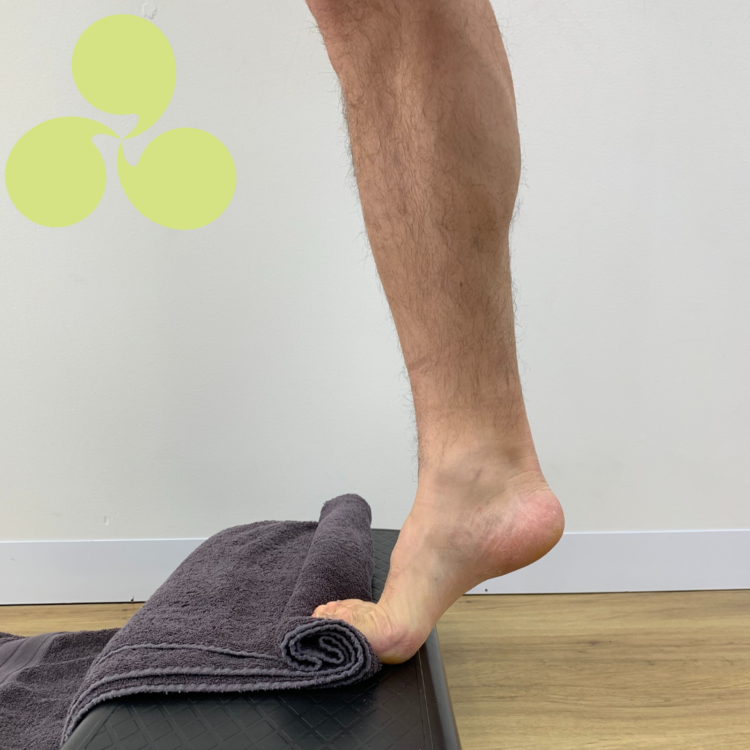Why Are Your Calves Sore After Running?
Calf soreness is a common injury experienced by runners; which can persist and recur if not managed appropriately. It typically occurs in activities involving running, jumping, hopping and landing. A pulled calf muscle can be debilitating, painful and result in runners reducing their running loads or stopping training altogether.
The calf is a group of muscles on the back of our lower leg travelling from the knee down to the Achilles tendon, which attaches to the back of the heel. It is composed of two major muscles, the gastrocnemius and the soleus.
The gastrocnemius is the large, upper superficial part of the calf and it is important for powerful, explosive movements such as sprinting, jumping and changing direction. The soleus is smaller and sits underneath the gastrocnemius. Both muscles are responsible for plantar flexion (pointing your foot), as well as generating 50% of running force propulsion. This highlights why the calf is a potential site for muscular injury and emphasizes its importance for walking, running and maintaining balance.
Treatment for sore calf muscles
Sore calf muscles commonly occur in sports or activities involving high speed running or increased volumes of running load (Hägglund, Waldén, & Ekstrand, 2013). People often feel sudden calf pain in the back of the leg at the time of injury, accompanied by weakness and an inability to stretch due to pain or discomfort. However, some runners may experience no moment of acute pain and instead might report tight calf muscles, resulting in pain that limits running and possibly walking.
The inside part (medial) of the gastrocnemius is the most common area for calf strain in runners (Fields & Rigby, 2016). The highest risk group in the general population is poorly conditioned males, 40 to 60 years old, who are often injured through recreational activity (Gallo, Plakke, & Silvis, 2012).
How Can Physiotherapy Assist with Calf Pain?
Initial Management:
If you begin to experience any calf pain or discomfort, the team here at Keilor Road Physiotherapy are specialists in performing a comprehensive physical examination to confirm your diagnosis. This will include which muscles are involved in your injury and the expected timeframe to return to doing what you love.
Following your assessment, your physiotherapist at Keilor Road Physiotherapy will discuss a thorough and individualised management plan. This will include personalised goals, factors contributing to your injury, a timeframe to expect a full recovery from your calf pain and the various treatment techniques that will be utilised in your management.
Initial management will aim to address the presenting symptoms and pain. This may be achieved with soft tissue techniques, rest and pain management strategies, as well as taping if appropriate.
Strengthening:
It is important to follow a tailored and individualised exercise program with an aim to strengthen and build load capacity of the calf muscles. This is imperative for successful calf muscle strain management. Your physiotherapist will provide strengthening exercises through a home exercise program, as well as utilise the Exercise Studio located here at the clinic.
Strengthening for calf pain.
Addressing Risk Factors:
The experienced team at Keilor Road Physiotherapy place importance on treating not only the symptoms but target the underlying cause of your calf pain. This may include poor biomechanics as a result of reduced ankle mobility or poor hip and pelvic muscular control. It may also include calf muscle tightness and reduced muscle strength or endurance.
Return To Running:
An important component for runners with lower leg pain is to develop a program to manage running loads and gradually build volumes progressively. Additionally, the running program will assist in building speed, agility, sport specific skills and prevention of re-injury. Knowing when to return to running is individualised and based on a collaborative approach between both the patient and treating physiotherapist.
In summary, treatment initially involves management of pain and presenting symptoms. A tailored and progressive exercise program to improve strength and the load capacity of the calf muscles is vital for all successful calf rehabilitation. It is important to work in collaboration with your physiotherapist to return to running and manage loads effectively and prevent recurring calf strains.
Keilor Road Physiotherapy are the experts at lower limb physiotherapists. Servicing Niddrie, Essendon, Airport West, Keilor & Melbourne’s Northern suburbs for over 40 years, you can book with one of our highly trained physiotherapist below or call 93794557 to speak to one of our admin superstars.
Related links
References
Hägglund M, Waldén M, Ekstrand J. Risk factors for lower extremity muscle injury in professional soccer: the UEFA Injury Study. Am J Sports Med. 2013 Feb;41(2):327-35. doi: 10.1177/0363546512470634. Epub 2012 Dec 21. PMID: 23263293.
Fields KB, Rigby MD. Muscular Calf Injuries in Runners. Curr Sports Med Rep. 2016 Sep-Oct;15(5):320-4. doi: 10.1249/JSR.0000000000000292. PMID: 27618240.
Gallo RA, Plakke M, Silvis ML. Common leg injuries of long-distance runners: anatomical and biomechanical approach. Sports Health. 2012 Nov;4(6):485-95. doi: 10.1177/1941738112445871. PMID: 24179587; PMCID: PMC3497945.
Article by
Shaun Tamraz | Physiotherapist
Shaun graduated with a Science degree from the University of Melbourne in 2016. Following a Gap year in Europe, Shaun returned to complete his Bachelor of Applied Science and a Master of Physiotherapy Practice at La Trobe University, graduating in 2020.



